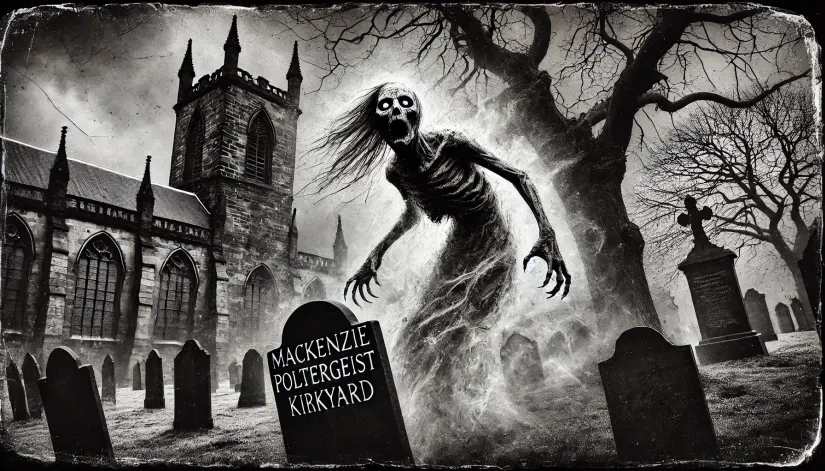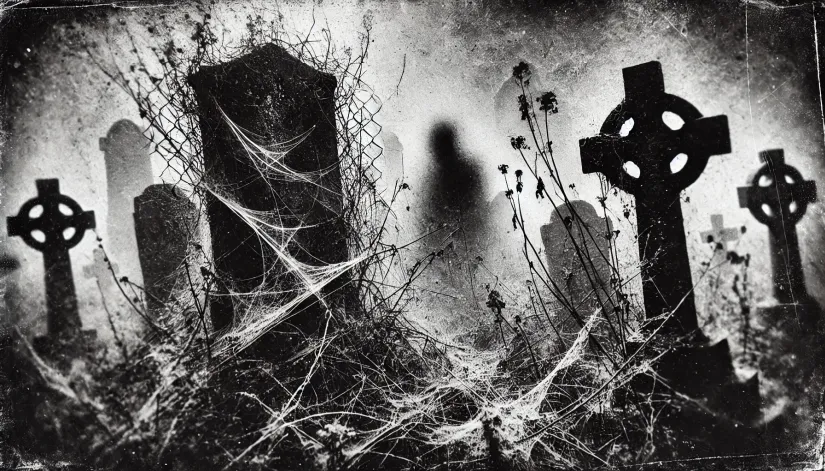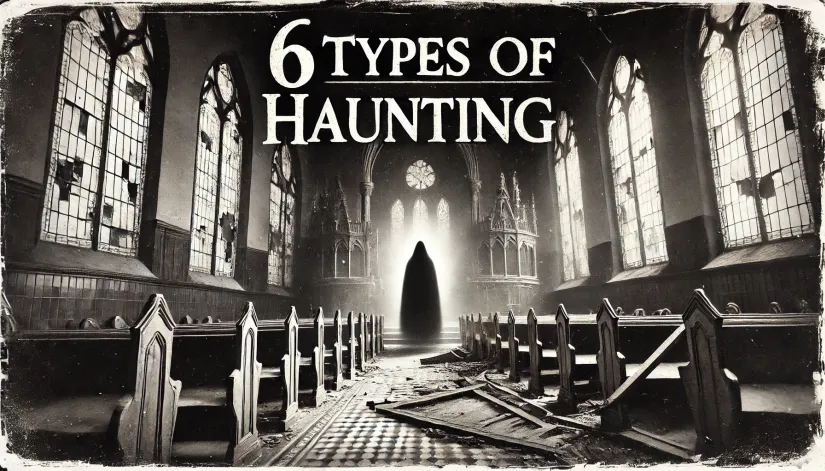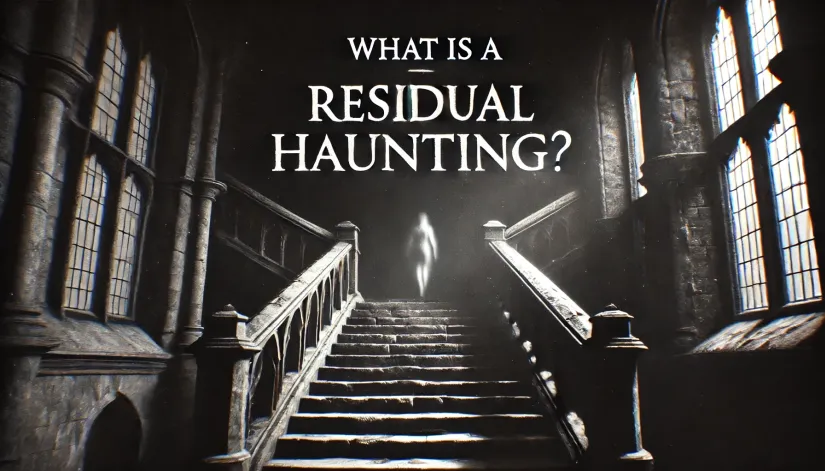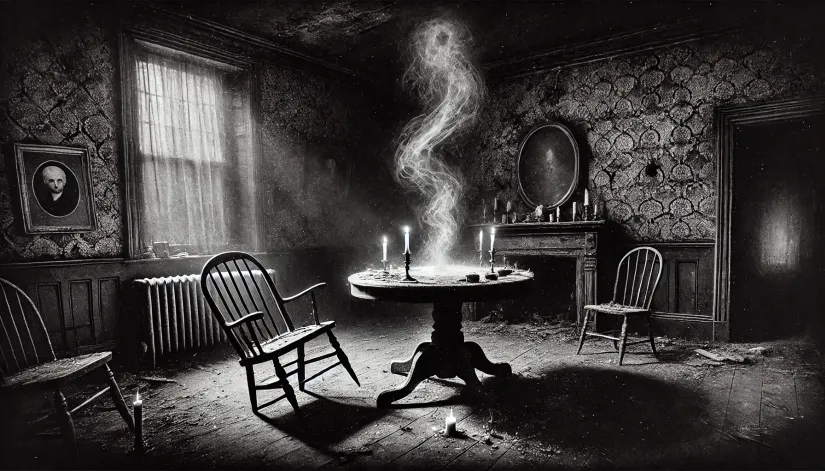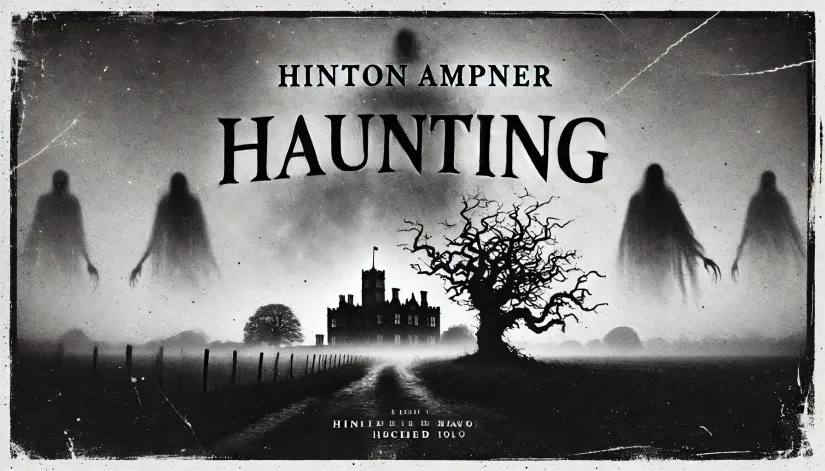The stories coming out of Greyfriars Kirkyard are not for the faint of heart. We’re talking about gruesome tales—people scratched, bruised, and even thrown by an unseen force.
Greyfriars Kirkyard, including the infamous Black Mausoleum, is one of the world’s most haunted places. And, with over 500 documented paranormal incidents, it has one of the highest numbers of reported hauntings ever recorded.
The Mackenzie poltergeist has terrorized locals and visitors alike, leaving behind chilling evidence that can’t be easily explained. If you’ve ever wondered what dark history lies behind such a malevolent presence, keep reading.
In this article:
A Brief Introduction
Here’s the thing. Most articles about the infamous Mackenzie poltergeist will take your right into the alleged haunting. I think that’s a mistake. They just miss the most important part: what actually happened there.
Let me explain why knowing the dark Greyfriars Kirkyard history—and especially what Sir George Mackenzie did—is so important.
First, I think that understanding Mackenzie’s brutal actions against the Covenanters gives you an actual perspective on why Greyfriars feels the way it does today. It’s not just about the ghost stories; it’s about the place’s dark, very real past.
Imagine the kind of pain and suffering that went down here—people were imprisoned, tortured, and many died in terrible conditions. When you think about that, it’s no surprise that so many visitors today feel this strange energy that has stuck around.
And who or what exactly is the Mackenzie poltergeist? Why is it Mackenzie’s ghost—or perhaps even his victims—that is said to haunt the kirkyard? I think the answers to all these questions are also rooted in history.
Related: Is Ectoplasm Real? Real Ghost Evidence or Mere Trickery?
Mackenzie was directly responsible for persecuting the Covenanters. And, in a bizarre coincidence, he’s buried just feet away from where many of them suffered and died. It’s like their stories are forever intertwined, even after death.
So, if you can understand what happened here, it gives you the context you need to comprehend the supernatural claims, too. And, of course, the stories about the Mackenzie poltergeist.
Yes, the ghost tours and accounts and all that might give you the thrills. But the real history—the stuff that actually happened—is what might hold the key to figuring out who haunts Greyfriars Kirkyard and why the Mackenzie poltergeist is still such a force to be reckoned with today.
Who Was Sir George Mackenzie of Rosehaugh?
Let’s start with a little trip back to 1636 Dundee, Scotland—because that’s when Sir George Mackenzie came into this world. He was the eldest son of Simon Mackenzie of Lochslin and Elizabeth Bruce.
From an early age, George had some big boots to fill. However, Mackenzie’s education was nothing short of top-notch. First, he got his schooling at King’s College, Aberdeen, then at the University of St. Andrews. Not stopping there, he took off to the University of Bourges in France to study law and philosophy.
Sir George Mackenzie’s Political Ascension
From 1638 to 1651, Scotland was rocked by political upheaval, a whole lot of wars—The Wars of the Three Kingdoms (including the Bishops’ Wars), the English Civil War, and the Cromwellian takeover.
It was pure chaos. A lot of innocents died. Families destroyed. The economy was in shambles. But how about the young George? Well, he was right there, soaking it all in. It’s no wonder his loyalty leaned towards the monarchy later on.
In 1660, he wrote “Aretina,” which tackled ethics and justice—pretty heavy stuff. In the same year, his political career also took off. He was pushed up in the ranks around the Restoration of King Charles II, after Oliver Cromwell’s government collapsed.
Charles II’s returning to power also meant that the monarchy and church authority were back. Which really shaped Mackenzie’s legal ideas.
In 1674, Mackenzie earned the title “Dean of Faculty of Advocates”—a big deal in Scottish legal circles. He also became a Member of Parliament for Ross-shire that same year.
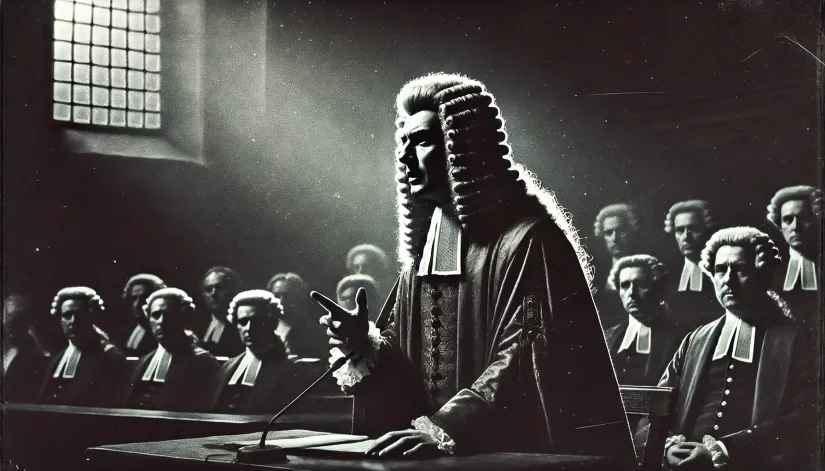
Role as Lord Advocate
1677 was a big year for Mackenzie. That’s when he was appointed “Lord Advocate” under Charles II. And if you know anything about Mackenzie, it’s probably this part of his life that stands out.
He was in charge of enforcing the king’s laws, which often made him the face of some pretty controversial stuff. Right after the Battle of Bothwell Bridge on June 22, 1679—where the Covenanters, those hardcore Presbyterians, got defeated—Mackenzie was front and center in prosecuting the losers.
The Covenanters started back in 1638 with the signing of the National Covenant, all to protect the Presbyterian Church from what they saw as corruption from the monarchy. They got involved in most conflicts against royalty, including in the Wars of the Three Kingdoms, and they kept resisting the monarchy even after it was restored.
Related: Anne Boleyn’s Ghost: The Tragic Queen Who Never Left
However, their crushing loss at Bothwell Bridge in 1679 was just the beginning of their nightmare, and Mackenzie made sure of it.
Mackenzie threw around 1,200 of these Covenanters into Greyfriars Kirkyard, which basically turned into an open-air prison—later called the Covenanters’ Prison.
Conditions were awful. Many died from exposure, starvation, or disease. Mackenzie’s brutal approach earned him the nickname “Bluidy Mackenzie” (“Bloody Mackenzie”).
And it wasn’t just because of this prison camp. He was also notorious for making sure that the very harsh laws were followed to a T and for putting people on trial with little to no evidence. The only thing that mattered? Loyalty to the crown.
Take the case of Archibald Campbell, the 9th Earl of Argyll. He refused to take an oath stating the king’s supremacy over the church. And guess what? Mackenzie made sure Argyll was executed on June 30, 1685.
Didn’t matter that the Earl was nobility; Mackenzie wasn’t playing favorites. If you crossed the monarchy, you were done for. It’s no exaggeration to say Mackenzie was responsible for many deaths—through execution or just letting people waste away in brutal conditions.
His absolute belief in the divine right of kings meant he didn’t care how extreme his actions had to be to keep control.
But here’s something interesting: Mackenzie was actually against the witch trials of the time. That’s right! While he was out there crushing political rebels, he was arguing against the witch hunts that were going on in Scotland.
These trials (along with the infamous werewolf trials) had been rampant since the 16th century, and by the 17th, thousands—mainly women—were accused and executed.
Interestingly, Mackenzie thought most of these accusations were bogus and pushed for rational legal procedures instead. It’s a weird twist, right? He could be incredibly rational in some ways, yet so brutal in others. A lot of people saw him as a tyrant, regardless.
The stories of Mackenzie’s harshness led to some pretty wild legends, like the one about the Mackenzie poltergeist. Even today, many believe his spirit is restless (and punished) because of all the suffering he caused.
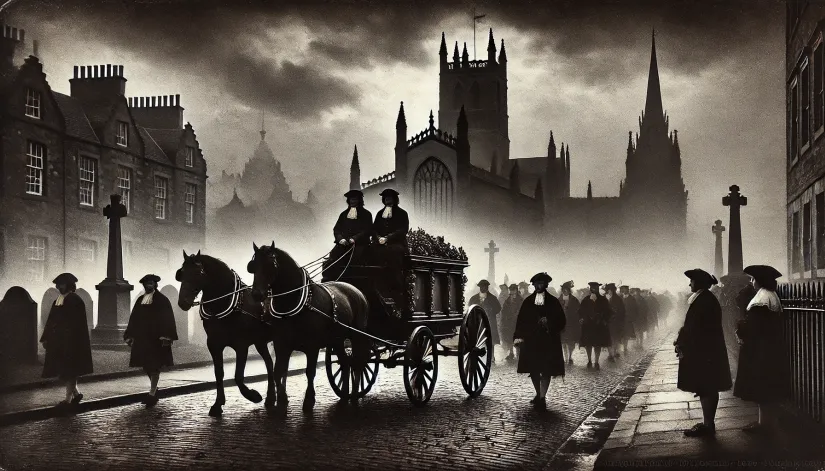
Later Years and Death
Things for Sir George took a horrible turn around 1686. The political situation was getting out of control, and the Glorious Revolution of 1688 really shook things up. That revolution led to King James II being overthrown in November 1688, ending any dreams of absolute monarchy.
Mackenzie was a devoted Stuart supporter. But he soon realized he didn’t fit in with this new political world. So, he took a step back.
He spent time reflecting on morality in his later years, even publishing “Moral Gallantry” in 1691. It was basically his way of trying to justify his actions—an attempt to make sense of all the harsh decisions he’d made as being part of his duty.
Mackenzie died suddenly on May 8, 1691, and they buried him in Greyfriars Kirkyard on May 10, 1691. His tomb was an elaborate octagonal mausoleum, designed by James Smith.
But here’s the thing—there were whispers about his death. Some folks say he suffered violent convulsions or some mysterious illness. Naturally, people started linking it to the supernatural. With all the suffering Mackenzie had caused, many believed the spirits of those he persecuted had finally caught up with him.
For many, his presumably violent end might’ve been a kind of poetic justice, like karma coming back around.
In a strange coincidence, his tomb (which became known as the Black Mausoleum) is just steps away from the graves of those he persecuted. Imagine that. His elaborate resting place ended up right next to the very people he condemned.
Greyfriars Kirkyard’s Tumultuous History
Okay, so I mentioned the Greyfriars Kirkyard, where a lot of tragedy happened. Well, this place has seen it all.
Founded back in 1561 after the Reformation, Greyfriars became a key burial ground for Edinburgh’s Protestant community. You’ve got some notable figures here: poet William McGonagall (who, let’s be real, might not be Scotland’s finest poet but sure is memorable), Mary Erskine—the philanthropist who founded the Mary Erskine School—and even some ancestors of Sir Walter Scott.
That’s why this cemetery holds so much history. Originally linked to the nearby Greyfriars Monastery, it quickly became a final resting spot for Edinburgh’s elite.
Related: Who is the Brown Lady of Raynham Hall Haunting Visitors?
It wasn’t just a quiet graveyard, though. On February 28, 1638, a pivotal event took place here: the signing of the National Covenant. This was all about preserving the Presbyterian faith against King Charles I and Charles II’s attempts to force Anglican practices onto Scotland.
The Covenant turned the kirkyard into more than just a cemetery; it became a symbol of defiance, a mark of Scotland’s fight to keep its own faith and independence alive.
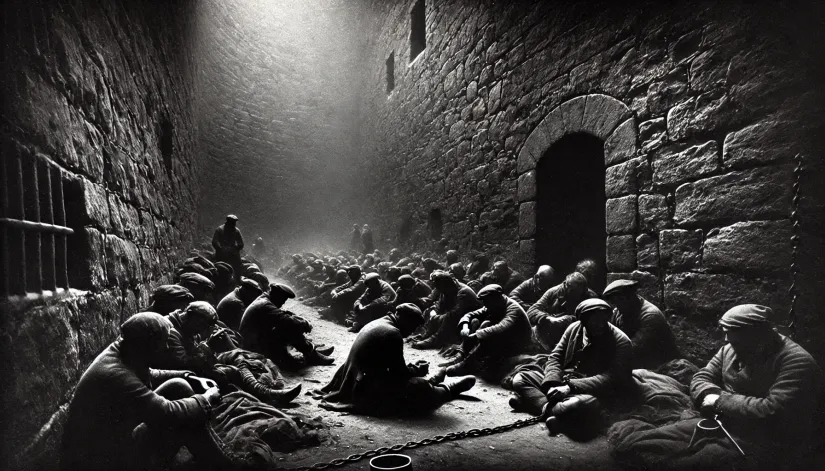
Covenanters’ Prison
On June 1679, right after the Battle of Bothwell Bridge, the Covenanters survivors were dragged to Greyfriars Kirkyard and imprisoned in what’s now called the Covenanters’ Prison.
The place was a nightmare. High stone walls. Shackled and beaten prisoners left out in the elements, barely surviving on scraps of bread and water. Exposure, starvation, and disease were everywhere. Many didn’t make it out alive.
Mackenzie made sure any attempts at rebellion were dealt with harshly. Defiance led to severe punishment—beatings were frequent, and guards were known to take pleasure in dishing out the pain. Some prisoners were tied up in agonizing positions for hours, while others were forced to watch as their friends were executed at Grassmarket.
Those public hangings were notorious for their cruelty. On top of that, it was not uncommon for the hangman to botch the job, prolonging the agony for everyone to see.
If any prisoners survived these horrors, they were often shipped off to the American colonies as slaves. But don’t think that was some kind of lucky escape—the journey itself was deadly. Many died before even getting there.
Because of all the cruelty and death, Covenanters’ Prison got a nasty reputation—a dark chapter in the kirkyard’s history that a lot of people believe is why the place feels haunted. Could the Mackenzie poltergeist be generated not by the Black Mausoleum itself but by the whole kirkyard?
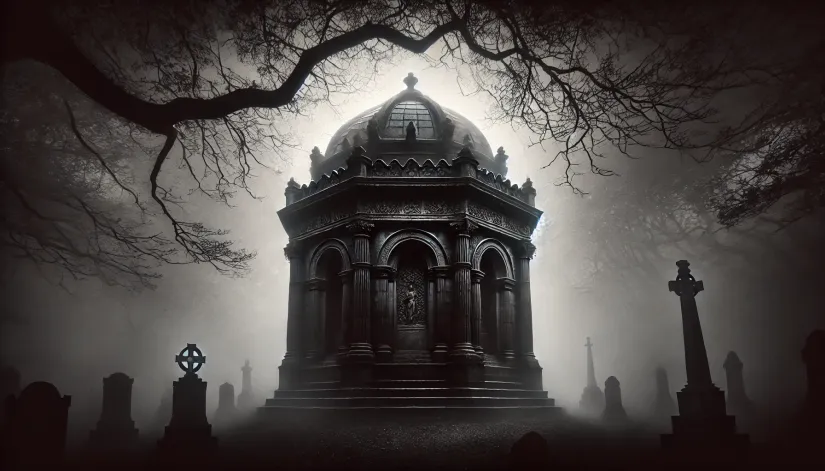
The Mackenzie Mausoleum (The Black Mausoleum)
That’s an interesting theory, right? The Black Mausoleum is the epicenter of most paranormal manifestations. But maybe it’s not the source of the Mackenzie poltergeist?
The Black Mausoleum was designed by James Smith in the late 17th century. It’s an imposing structure meant to scream wealth and power.
It’s octagonal, decked out with intricate carvings, Corinthian pilasters, and detailed stonework—all showing just how important Mackenzie was. Its location, practically right next to Covenanters’ Prison, only makes the whole vibe creepier.
Mackenzie’s burial at the Black Mausoleum has sparked curiosity for ages. People are fascinated—and a little spooked—by the idea of his restless spirit. Over the years, there’ve been plenty of reports about disturbances to his remains. Vandals broke into his tomb several times, and some think all these disruptions have kept his spirit from finding peace.
It’s poetic justice if you ask me—an old tyrant haunted by those he wronged, right there in the kirkyard? That’s part of what makes this place so chilling and why it remains a staple of Edinburgh’s ghost lore.
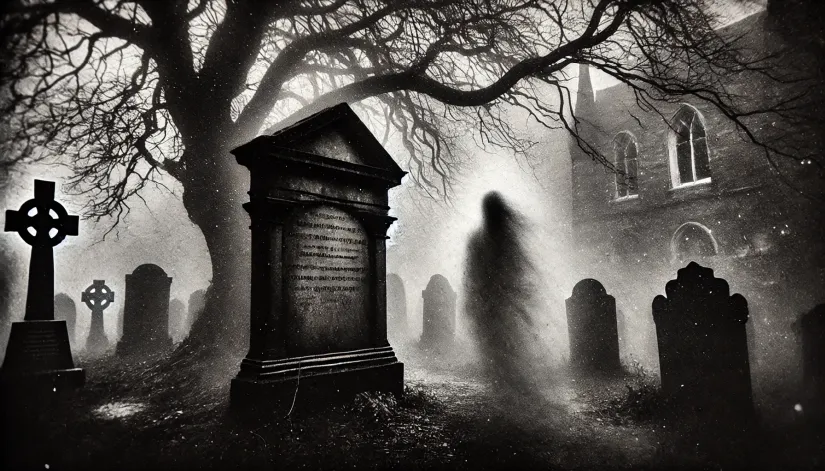
The Mackenzie Poltergeist
So, why do people believe Greyfriars Kirkyard is haunted? Well, let me tell you this: Greyfriars Kirkyard has a haunting reputation for a reason.
The brutal treatment of the Covenanters left a scar on this place. The trauma left an imprint, almost like an echo of the past that never really goes away.
SpookySight recommends:
- Borley Rectory Ghosts: England’s Most Haunted House?
- The Winchester Mystery House: History, Oddities & Terrifying Secrets
- Is the Flatwoods Monster Real? An In-Depth Investigation of the 1952 Sighting
Paranormal reports around Greyfriars Kirkyard (especially near the Black Mausoleum) go way back—nearly three centuries of strange occurrences have made this place infamous.
One of the earliest documented paranormal events happened around 1800 when a criminal named John Hayes hid inside the Black Mausoleum for almost six months.
By the time the police caught up with him, Hayes was already half-insane. He allegedly claimed that coffins moved on their own at night and insisted he could hear whispers and scratches from inside Mackenzie’s tomb.
However, most of these reports weren’t really significant. Or at least not substantial enough to raise suspicions of anything unusual happening around the mausoleum.

The 1998 Break-In Incident
Everything changed in December 1998 when a homeless man broke into Mackenzie’s mausoleum, disturbing what probably should’ve been left alone.
Apparently, this man spent several nights inside the crypt, destroying marble ornaments, breaking several coffins, and even attempting to vandalize Mackenzie’s—though this one proved too difficult to break open.
At some point, the intruder fell through a rotted floorboard into a hidden chamber beneath that no one knew existed until that moment.
Inside, he found himself surrounded by dozens of decomposing corpses and bones piled on top of each other in a horrific sight. Panicked by this gruesome discovery, he fled the cemetery, disappearing into the dead of night.
Although the police searched for him for months, the man was never found, and his disappearance remains unsolved to this day.
This grisly discovery seemed to wake something up—at least, that’s what many people think. Why? Because this particular incident caused a massive spike in paranormal activity almost immediately, and it didn’t take long for strange things to start happening: the Mackenzie poltergeist.
What Evidence Was Found of the Mackenzie Poltergeist?
Since the break-in, there have been over 500 reported incidents involving the Mackenzie poltergeist. We’re talking scratches, bruises, fainting spells—you name it. Some even reported broken fingers or deep gouges appearing on their skin after visiting the mausoleum.
And it wasn’t just physical stuff; visitors also felt sudden dizziness and nausea, often describing it as being overwhelmed by some unseen presence. The closer people got to the mausoleum, the worse it got—some even claimed to be physically pushed back by an invisible force.
Then there are the photos. Tourists have snapped pictures showing ghostly figures, weird mists, or strange lights around the mausoleum. Some of these photos even show what looks like translucent human shapes or floating heads.
One former police officer (who preferred to remain anonymous) described his experience while visiting the Black Mausoleum:
“After the tour, I went back to our hotel room. I was sitting there, reading ‘The Ghost That Haunted Itself’—you know, the one by Jan-Andrew Henderson about the Mackenzie Poltergeist—when out of nowhere, I felt this sharp, burning sensation on the right side of my neck. When I checked, I found five deep scratches just below my Adam’s apple. It was so strange, like they just appeared out of thin air. The next day, after we got back home, I went straight to my mom’s place. I told her everything and handed her the book because, honestly, I didn’t want it anywhere near me. Yesterday, I called her to see what she thought of it. She told me she had noticed five scratches on her neck, just like mine. I mean, exactly like mine. It was unbelievable. I’m not scared easily, but I swear to you, this has shaken me to my core. Whatever is in that graveyard prison is real, and it terrifies me.”
The sheer volume of reports—plus the fact that people have actually been injured—makes the Mackenzie poltergeist one of the most documented hauntings in the world.
The tour guides have some of the most compelling stories. Imagine trying to lead a group and suddenly being scratched or having stones thrown at you. A bunch of guides actually quit their jobs because of what they experienced.
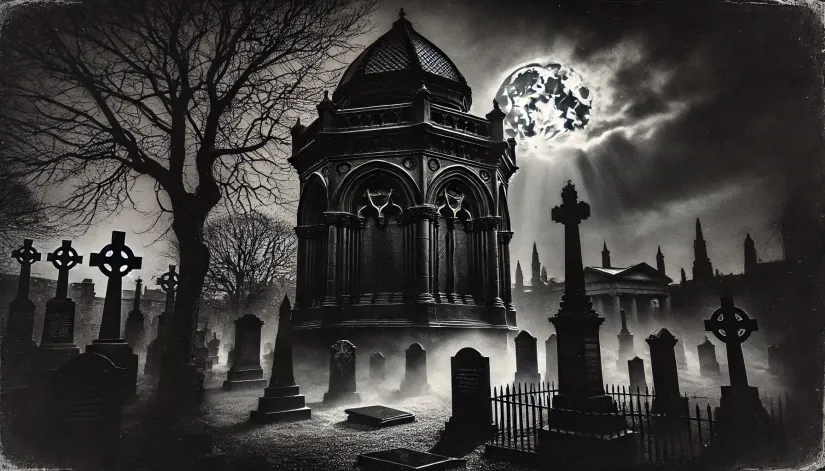
The 2000 Exorcism Attempt
In January 2000, Colin Grant, a minister of a spiritualist church and owner of the Clairvoyant Shop in Edinburgh, attempted to exorcise the Mackenzie poltergeist.
The exorcism took place near Greyfriars Chapel, with Grant appearing before local media, holding a candle, a cross, and a Bible. He shouted a few incantations and, at the end, claimed that he had finally banished the spirits trapped in the cemetery for centuries.
But, just as Grant was wrapping up his strange ritual, some attendees allegedly spotted a dark shape gliding through a chapel window—even though the building was locked and no one was inside.
Terry McGourty, deputy editor of the Edinburgh News, reported:
“The flashes weren’t pointing at the building, so it’s hard to believe how it could be a shadow. I’m usually skeptical of these things, but I can’t explain that shadow at all.”
Despite his initial confidence, Grant abruptly abandoned the exorcism, saying the entity was too strong to be subdued.
However, the following evening, Grant returned to the site. This time, accompanied by a group of believers. During this second exorcism attempt, many of the 49 participants claimed they felt they were being followed or touched.
Angela Hamilton, who accompanied Grant inside the prison, said:
“It felt like someone had grabbed my face—like an actual hand was pressing down. I couldn’t see properly, and I could barely breathe. Everything just went black after that. The next thing I remember, I was lying on the ground, with people crowding around me, asking if I was okay. Honestly, I was too out of it to even answer. The weirdest part was when I woke up the next morning—I had this bruise on my left cheek and another on my neck. It shocked me because I don’t bruise easily. I don’t know what it was, but whatever’s out there—it wanted to hurt me. And it did.”
On January 26, just shortly after expressing fears that the stress caused by the repeating exorcism attempts could kill him, Grant tragically died while communicating with the spirit world during a séance at the Clairvoyant Shop.
The official cause of death was a heart attack. Yet, in his report, the coroner allegedly noted that “something scared him so much that his heart stopped.”
Following Grant’s death, Edinburgh City Council decided to close off Greyfriars. It remained off-limits until local historian Jan Andrew Henderson persuaded officials to reopen a well-marked area as a tourist attraction.
Despite the Council’s efforts to limit access, reports of poltergeist activity haven’t slowed down. If anything, the Mackenzie poltergeist—or whatever’s haunting the place—doesn’t seem to be going anywhere anytime soon.

